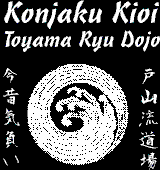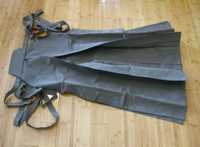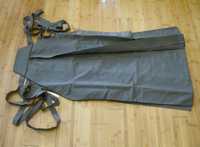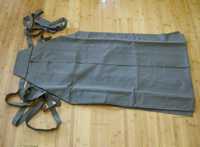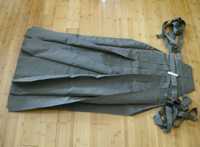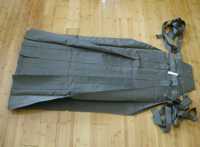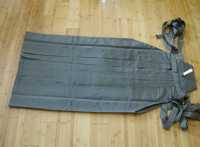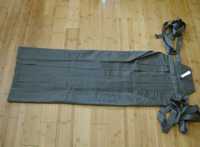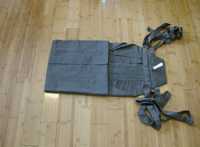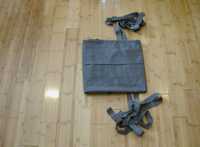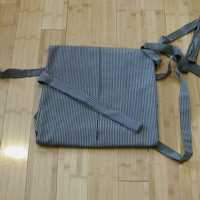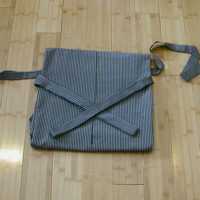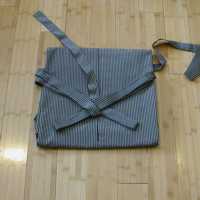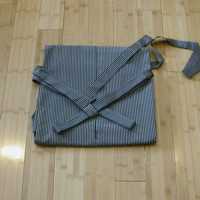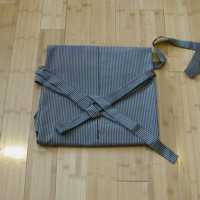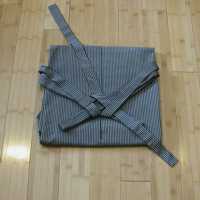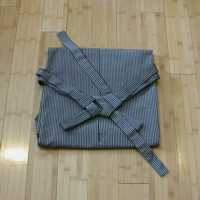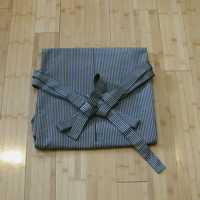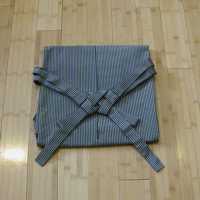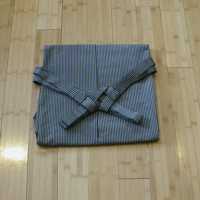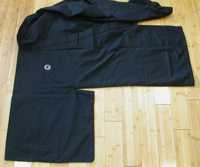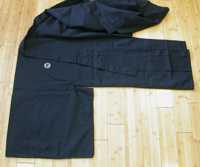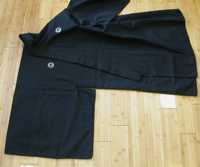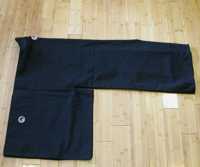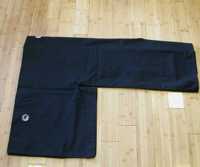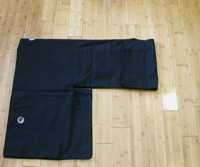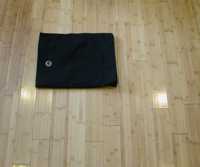 |
Toyama Ryu Batto Do Konjaku Kioi Dojo (Ancient and Modern Fighting Spirit Dojo) |
5980 66th St N Suite M St Petersburg FL 33709 Email: info@toyama-ryu.com Phone: 727-329-9679 |
|
Home
|
Uniform CareFolding the HakamaA hakama needs to be folded on a clean flat surface. Proper folding is very important to maintaining the folds in a hakama. Hanging will cause a hakama to loose the crisp folds. Remember that all the folds in a hakama run parallel and should be the same width from the top to the bottom. Start with the hakama face down and find the inner fold. Most hakama have a seam running down the inner fold. The inner fold must be pushed to the proper side and flattened out. The back folds alternate from one side to the next and you can use this fact to determine which side to push the inner fold to. Working from the inner fold to the back of the hakama, make each fold even. The folds run parallel so the overlap at the top should be maintained to the bottom. If you have lost the folds, use a ruler to measure the depth and overlap of each fold.
The hakama is flipped over to fold the front. This takes practice to keep the folds on the back from coming apart. The bottom of the hakama is dragged on the surface to keep everything together. Clothespins can be used along the bottom to keep the back folds from coming undone. Working from the inner fold to the front of the hakama, make each fold even. The folds run parallel so the overlap at the top should be maintained to the bottom. If you have lost the folds, use a ruler to measure the depth and overlap of each fold.
The edges of the hakama can be folded inward to reduce the size. This is not recommended for storing a formal hakama but is useful for fitting practice hakama in a gym bag. The hakama is folded in thirds. If the back folds have separated, start the process again.
The front strap to the left (first strap) is straightened and folded in half. It is folded in half again and laid across the diagonal of the hakama. Note that if the strap is too short to go across the diagonal, it may have to be folded in thirds. The same process is repeated for the front strap on the right (second strap). The straps should form an X across the hakama. The back strap on the left (third strap) is laid on top of the first strap, goes over the second strap, and is passed under both straps were they intersect. This strap should be pointed at the top of the hakama.
The third strap should then wrap around the first strap above the intersection point. The third strap should then follow the first strap. The back strap on the right (fourth strap) is laid on top of the second strap, goes over all strap, and is passed under all straps were the first two intersect. This strap should be pointed at the top of the hakama.
The fourth strap should then wrap around the second strap above the intersection point. The fourth strap should then pass under the third strap that was wrapped around the first strap.
The third and fourth straps can be folded back under if they are too long.
Folding the MontsukiThe montsuki needs to be folded on a clean flat surface. It can be hung on a kimono hanger or a straight rod, but a normal hanger will damage the shoulders. Lay the right side of the montsuki flat with no creases. The top and sleeve should form a straight line.Flip the right side over making sure this fold lines up with the collar.
Align the left side and sleeve with the right side.
Fold the montsuki into sections that are the same height as the sleeves.
Washing the practice uniformPlease follow the manufacturers recommendations for cleaning all uniforms. These are some general guidelines but we bear no responsibility for any damage caused by following this guide. Most cotton and polyester practice uniforms can be washed in cold water with normal detergent either by hand or in a washing machine. Indigo died keikogi should have the color set before washing. The uniform should never be dried in a dryer. We recommend folding hakama and keikogi on a waterproof surface and letting them dry flat. Go through steps 1 to 5 in the Folding the Hakama guide and lay the straps out flat. Washing will remove all the folds from most hakama so they will need to be folded carefully to get the pleats back. Letting the hakama dry in this way will put the pleats back in. Keikogi can be dried flat or hung on a horizontal pole. Make sure the pole is water proof. Washing the dress uniformPlease follow the manufacturers recommendations for cleaning all uniforms. These are some general guidelines but we bear no responsibility for any damage caused by following this guide. Silk and silk blend dress uniforms must be cleaned professionally. We have had mixed results with dry-cleaners since they have no experience with the pleats on hakama. Most can be “freshened up” using home dry-cleaning products. |
Copyright © 2006 by Konjaku Kioi Toyama Ryu Dojo, All rights reserved.
Samurai Swords
Iaito (Practice Swords)
Shinken (Cutting Swords)
Wakizashi (Short Swords)
Tanto (Daggers)
Japanese Weapons
Maintenance
Uniforms
Sharpening
Sword Repair
Martial Arts
Dictionary Your Name in Japanese
Dojo Stories
Tatami Targets
